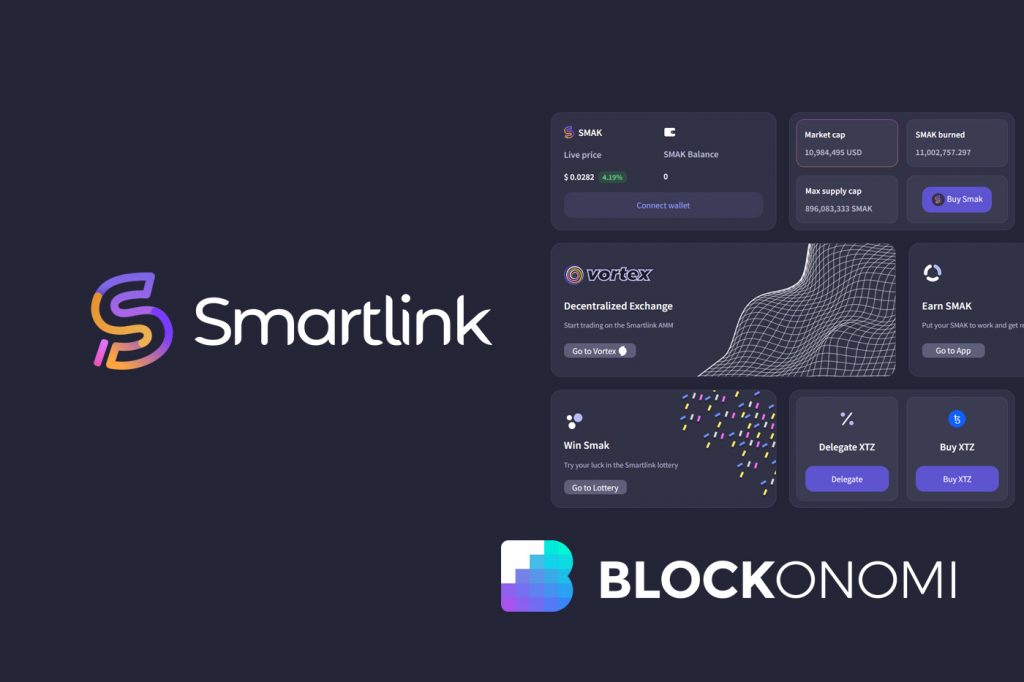The emerging demand for digital assets continues to increase in the finance industry with the boom of blockchain technology. The technology has become a more stable version with enterprise-level blockchain applications launched.
However, there are still current challenges to established blockchain networks. Smartlink is one of the blockchain projects with the goal to make the blockchain industry more secure.
Smartlink was designed to solve one of the biggest challenges in the digital space by launching decentralized escrow services and payments processing based on institutional-grade smart contracts, called Need to Trust.
It aims to contribute to blockchain network safety, helping buyers and sellers to trust each other.
What Is Smartlink?
Smartlink’s main solution is a user-centered escrow to secure online and face-to-face transactions while also offering the list of growing paymens acceptance options through integrated wrapped currencies.
Its method, Trust-As-A-Service, was launched to incentivize commitment and reduce the trust deficit in commercial transactions.
Similar to regular customer-to-customer transactions, exchanges are facing major challenges in security measures, fraud, confidence, and protection.
Smartlink is providing the global marketplace a decentralized escrow system built on Tezos that focuses on Web 3.0 functionalities for the next generation of payments processing.
An ecosystem of services provided by Smartlink can help traders to eliminate the need for trust during a commercial transaction. In order to achieve this, Smartlink has developed a suite of decentralized services built on the Tezos blockchain.
What Does Smartlink Offer?
The global financial marketplace is transforming strongly with the wave of the digital economy. Modern technologies are reshaping how trade is implemented across various industries.
The Covid-19 pandemic has made the development of the cross-border eCommerce industry as well as the global eCommerce industry as the number of online shoppers and working remotely rapidly increased.
On the other hand, that has made the rise of economic crimes across the world a challenge in the current payment ecosystem.
Ethereum is one of the most popular blockchain networks used for the development of dapps as blockchain technology is deployed across various industries.
However, the rise of gas fees is one of the biggest drawbacks for new products built on Ethereum. That is a challenge for low-value transactions on the Ethereum network.
Smartlink is built on Tezos blockchain, one of the best blockchains in space. It is also a good new infrastructure for developers to make applications.
Tezos is designed with the safety and code correctness required for assets. The blockchain’s modular architecture and its upgrade mechanism can help new technology to implement smoothly.
The blockchain has been upgraded allowing the network to be 3,000 times cheaper than Ethereum while storage costs are reduced and the overall performance of smart contract execution is provided.
Smartlink Features
API integration
Smartlink payments processing solution API can create transactions between two or multiple parties, and create offers. Developers also can check updated transaction details and other key functionalities will help them to bring escrow payments and multi-cryptocurrency support to a website, app or marketplace.
KYC security
To safeguard its users’ information, Smartlink uses multi-level security measures without compromising the security of the network. Data is stored in a local database or a decentralized data storage such as IPFS.
The platform collects the necessary data to comply with the standard protocol of KYC and AML procedures. Enterprise-grade security features include two-factor authentication, which is biometric authentication, and end-to-end encryption for all the user-to-server data packets.
Institutional grade smart contracts
Smartlink aims to offer high transactions by ensuring the level of security on smart contracts. Smartlink’s escrow smart contracts are made on the SmartPy platform provided by Tezos.
Tezos provides formal verification of its smart contracts meaning these smart contracts must be verified by mathematical values to the programmed code.
Smartlink Token
SMAK is the native token used on the Smartlink platform built following the TZIP-7 standard, including a ledger that identifies to token balances, an interface to interact with external contracts or accounts for users to transfer their balance.
Users can enjoy a benefit by using the token by a fee exemption among other features such as escrow rewards, staking, as well as participation in the platform’s governance.
SMAK is also the governance token which means holding the token allowing users to vote on critical platform decisions.
In addition, every transaction on Tezos requires gas fees to be paid in the native token of Tezos, Tez. In this case, Smartlink uses TZIP to implement transactions on Tezos, users can make payments in SMAK, stablecoins, or other supported tokens without the need to hold the tokens.
The SMAK token is distributed as follows:
- Public sale: 30%
- Private sale: 9%
- Treasury: 40%
- Teams and founders: 11%
- Partnership: 3%
- Advisors: 4%
- Ambassadors: 3%
The SMAK Token Metrics are below:
- Standard: FA 1.2
- Token Supply: 896,083,333
- Initial Circulating Supply: 271,432,562
- Initial Market Cap: 2,714,325
- Fully Diluted Market cap: USD 8,960,833
- Pre-Sale Price: USD 0.007
- Public Sale Price: USD 0.010
Smartlink has two kinds of contracts: the ‘Escrow rewards’ contract and the ‘Staking’ contract due to their BIG_MAP. It is different from addresses, associated amounts, and other additional functions on data.
These contracts will be introduced after the public sale. Also, the staking contract can help the escrow contract to use the BIG_MAP of closed exchanges in determining the last transactions in order to apply the stacking bonuses.
Smart contracts play an important role in the world of DeFi, and by making them an integral part of its platform, Smartlink has set itself up for strong growth.
Who Should Use Smartlink?
Smartlink is designed to create an ecosystem for safe, secure transactions along with DeFi potential featuring an escrow smart contract module, a decentralized marketplace, an open Launchpad, and yield farming built on Tezos.
Smartlink operates across three segments including escrow services, marketplace, and fundraising.
For the escrow services segment, Smartlink introduces new paradigms which reduce processing charges for escrow services from 0% to 1% rather than traditional escrow services do. There is a 0% fee for transactions made using SMAK.
The platform is offering payment settlements in under 1 hour, which must be faster than the standard 3-10 days payment processes in other escrow services.
In addition, there’s an API feature for crypto payments that can integrate into websites, apps, and eCommerce marketplaces.
Smartlink also brings a new way to users in trading products and services that have not yet appeared in a high technicality and scalability level allowing the marketplace users can easily integrate compatible wallets for swift payments.
As mentioned before, Smartlink provides many crypto-payment methods, in addition to SMAK, and offers additional features including escrow, decentralized dispute resolution services, governance system, reward program, and staking.
The platform cannot only remove the standard 10% to 20% commissions on popular platforms but also allow users to access advanced web 3.0 functionalities.
The Smartlink module uses escrow smart contracts to raise funds in cryptocurrency. The platform offers more flexibility for users to add conditions to the contract and personalize it as they wish.
Closing Thoughts on Smartlink
By taking advantage of Tazos blockchain, the Smartlink project is definitely a leader in the Tezos ecosystem to bring a new user experience to the global marketplace.
Users of any size can scale blockchain up to fit their needs with Smartlink. If you want to learn more about Smartlink, you can visit its website by clicking right here!
The post Smartlink: Creating Safety in the Global Blockchain Space appeared first on Blockonomi.
















